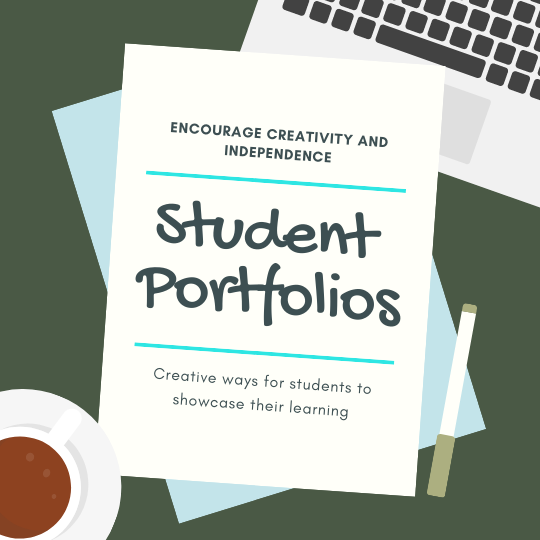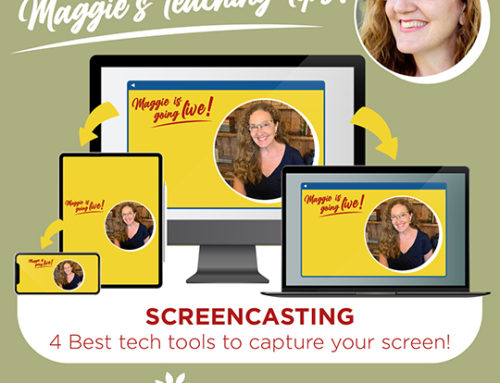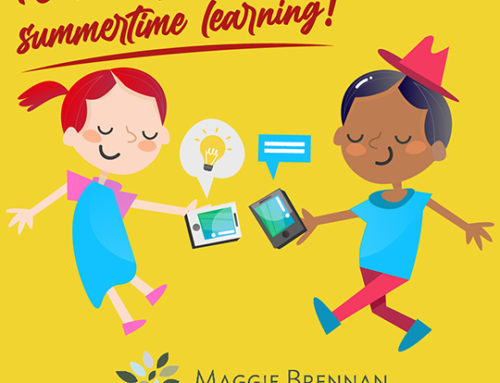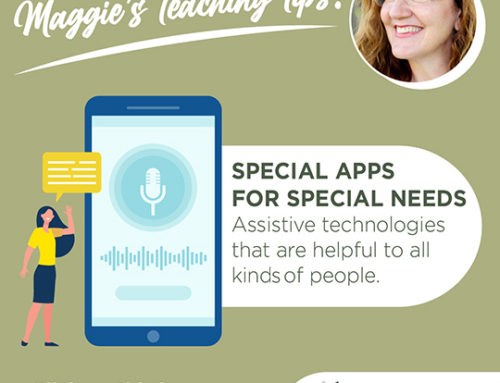Want creative and independent students? Read below.

f you say, “Let’s have all the students do portfolios!” to an experienced group of teachers, prepare for a very heavy sigh and eye roll. Any teacher who has done portfolios knows that it is a TON of work for everyone involved. You need time, energy, storage space and a highly coordinated effort from the teachers.
At least it used to be that way…
Luckily for us, the internet was invented, giving us quick and easy ways to make all kinds of portfolios!
But first you may be asking: Why Portfolios?
There are SO many reasons why portfolios are a good idea, especially nowadays. Virtual learning has completely changed traditional assessments and grading, so we need new projects like these. Portfolios can provide a well rounded picture of what the student has learned over the course of a semester or a year. It’s not just a snapshot of what they memorized for a test or copied down on a worksheet.
Think of Portfolios this way:
- Portfolios require students to reflect on their work, a great way to encourage higher level thinking.
- Portfolios encourage creativity in design and selection. They must decide what to include in the portfolio so that it accurately shows their progress.
- Digital portfolios showcase all different types of work – audio recordings, video projects, written text, photos of artwork or notes, digital projects etc. This make for a well rounded summary of the student’s work.
- Portfolios require students to be more independent. They are the ones who decide on what to include.
- Importantly, portfolios give students choices as to what they want to include and how to present their work.
How to make a digital portfolio
A portfolio is ANY type of summative project or collection that shows the student’s progress in a class. It could include work from a semester, a whole year or a multiyear project.
SeeSaw is an incredibly popular app/website that anyone can use for free. The teacher creates a “class”, students enter the class through a code and then upload examples of their work to their “journal” (the portfolio). Students can only see their portfolio, but the teacher can see everyone’s portfolio.
Don’t let the somewhat childish interface with bright colors and big fonts fool you. SeeSaw is not a children’s app. It is a powerful tool that any grade level or subject matter can use to showcase their work.
Even though SeeSaw is incredibly popular, it is NOT the only way to create portfolios!
Other, creative portfolio ideas
In fact, Portfolios don’t even have to be a traditional “book” portfolio. They can be any type of summative project that shows the student work. Here are some other examples of projects that show a collection of work over time:
- Use Book Creator to make digital books with photos, text, graphics, video, audio and even comics!
- Create a simple website with Spark Page, Wix or GoDaddy. Students could work alone or in groups to design different menu items with examples of work from each unit during the year.
- Many museum websites will allow you to make custom exhibitions of your favorite works, artists or genres. This is an alternative way to group ideas into a collection that could demonstrate higher level thinking and categorizing. Google Arts & Culture and Artsonia are excellent tools for this type of project.
Thinking out of the box – Alternative Portfolios
One year I did an experiment where I created a “portfolio” of their grades from the beginning of the year to the end. I divided all of the assignments by student and by category (essays, tests, audio recordings etc.). I then created a bar graph showing their progress in each category. It looked something like this:


For example, Amanda had 4 separate bar graphs (two are shown here). The first one showed her grades for writing assignments over the course of the year. The second one is similar, except for speaking assignments. Typically their grades at the beginning of the year are lower than at the end, so it is a very graphic way of showing them their progress.
As a summary activity, I shared all the graphs with the entire class (without their names of course). This led to a super interesting class discussion too!
Granted, this was a lot of work for me, but honestly the students found it to be fascinating. I was lucky that it was a small class with highly engaged students, so the experiment was a big success. You could consider have the student create their own bar graphs and explain what they did well, and what they need to improve.
So, in conclusion…
As you can see, there are lots of creative ways to showcase student learning over the course of the year. The majority of the portfolio examples are student-centered projects, allowing them to express their creativity, their voice and their independence. As one of my students said after finishing this summative project, “Wow, I didn’t realize how much we did this year. This is incredible!” Hearing those words made the whole project worth it.
Want a Free Online Teaching Guide?
5 Simple Ways to Improve Online Teaching
Just subscribe below.
You can unsubscribe from the list at any time






Great tips, Maggie, thanks for sharing!